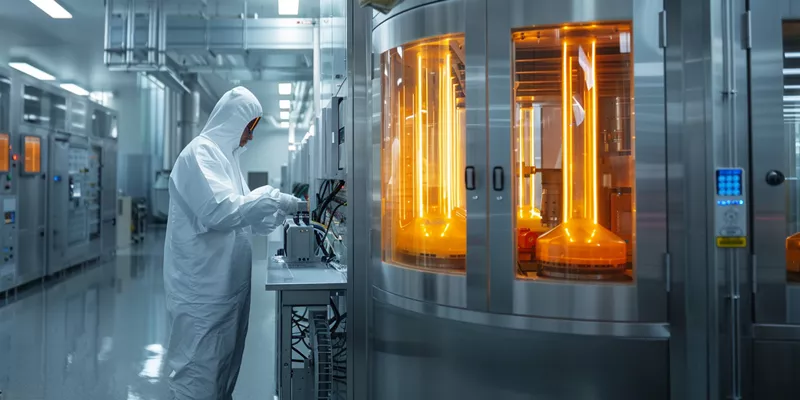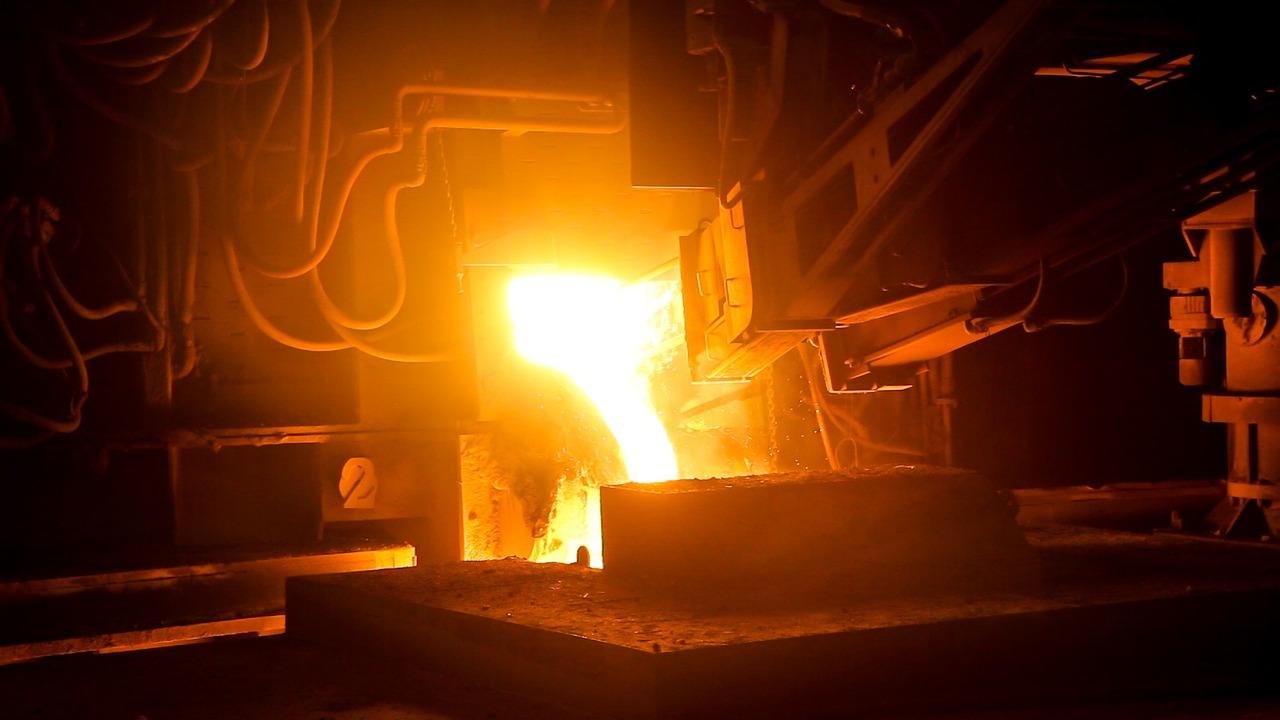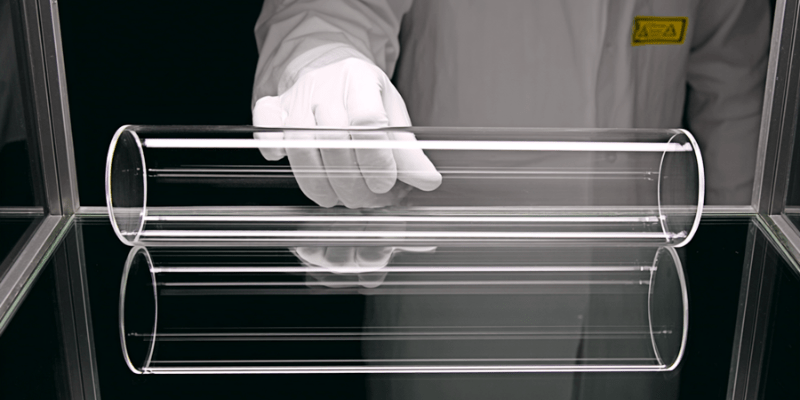Precision quartz tube selection is a critical engineering decision for advanced laboratory, semiconductor, and medical applications.
Custom quartz tubes must meet strict design, thermal, and purity standards. This guide covers specification frameworks, stress calculations, supplier assessment, and cost drivers to ensure optimal performance and procurement in 2025.

Engineers and buyers will find actionable protocols for every stage—from initial design to supplier evaluation and maintenance.
Defining Precision Custom Quartz Tubes: Core Specifications
Custom quartz tubes are engineered to meet demanding requirements for purity, dimensional accuracy, and surface finish. The right specification ensures compatibility with high-temperature, high-purity, and optical-critical systems.
Material grade, tolerance class, and surface quality are the foundation of reliable tube performance. Engineers must define these parameters at the outset of any custom project.
Material Grades: Type I vs Type II Fused Silica
Type I fused silica is produced by flame fusion of natural quartz, offering good UV transmission and moderate purity. Type II is made from synthetic precursors, providing ultra-high purity and superior UV performance. Selection depends on application sensitivity and cost constraints.
Dimensional Tolerance Classifications (ISO 8015)
Dimensional tolerances are specified according to ISO 8015. Precision tubes may require wall thickness tolerances of ±0.05mm and diameter tolerances of ±0.1mm. Tight tolerances are essential for semiconductor and medical applications.
Surface Finish Requirements (Ra 0.4-1.6μm)
Surface finish impacts contamination risk and optical clarity. For high-purity or optical uses, a finish of Ra 0.4–0.8μm is typical. Less demanding applications may accept Ra up to 1.6μm.
Critical Thermal Properties for High-Temperature Applications
Thermal performance is a key driver in quartz tube design. Engineers must account for expansion, shock resistance, and heat distribution.
Proper design prevents failure during rapid cycling and ensures long service life.
Thermal Expansion Compensation Design
Quartz tubes have a thermal expansion coefficient of 0.55×10⁻⁶/K. Designs must allow for expansion during heating to avoid stress fractures. Compensation features include expansion joints and flexible mounts.
Thermal Shock Resistance Thresholds (1000°C/min)
Quartz tubes can withstand thermal shocks up to 1000°C/min, far exceeding most ceramics or glass. This makes them ideal for rapid cycling in CVD, annealing, and sterilization.
Heat Distribution Optimization
Uniform wall thickness and precise geometry ensure even heat distribution. Engineers should use simulation tools to model temperature gradients and optimize tube design for their process.
Semiconductor Quartz Tube Design: Stress Calculation Methodology
Stress analysis is essential for tubes used in semiconductor and high-pressure environments. Proper calculations prevent catastrophic failure and extend tube lifespan.
![]()
Von Mises Stress Modeling in CVD Chambers
Finite element analysis1 (FEA) is used to model Von Mises stress2 in quartz tubes under thermal and mechanical loads. This helps identify weak points and optimize geometry.
Wall Thickness vs Pressure Differential Formulas
The required wall thickness is calculated based on internal pressure and tube diameter. Use the formula: t = (P × D) / (2 × σ_allow), where t is thickness, P is pressure, D is diameter, and σ_allow is allowable stress.
Thermal Stress Calculation Templates
Thermal stress is calculated using ΔT, the temperature difference, and the material’s expansion coefficient. Templates and calculators are available to streamline this process for engineers.
Medical Laser Components: Quartz Sheath Fabrication Case Study
Medical laser systems3 require quartz sheaths with extreme precision and biocompatibility. This case study illustrates best practices in design and validation.
Endoscope Sheath Dimensional Mapping
Endoscope sheaths must fit tightly over optical fibers and surgical tools. Dimensional mapping ensures tolerances within ±0.05mm for safe and effective use.
Biocompatibility Certification Process
Quartz sheaths must pass ISO 109934 biocompatibility testing. This includes cytotoxicity, sensitization, and irritation assessments to ensure patient safety.
Sterilization Cycle Validation
Sheaths are validated for repeated autoclave and chemical sterilization cycles. Testing confirms that material properties and optical clarity are maintained after 100+ cycles.
Dimensional Tolerance Specification Framework
Dimensional accuracy is non-negotiable for custom quartz tubes in critical systems. A robust specification framework ensures consistency and quality.
Critical Dimension Annotation Standards
All critical dimensions should be annotated on engineering drawings using ISO or ASME Y14.5 standards. This includes diameter, wall thickness, and length.
GD&T Application Guidelines
Geometric Dimensioning and Tolerancing (GD&T) is used to control form, orientation, and location. Proper GD&T reduces assembly errors and improves interchangeability.
Inspection Protocol Selection
Inspection protocols may include CMM measurement, optical profilometry, and go/no-go gauges. Choose methods based on required precision and production volume.
Technical Capability Assessment for Quartz Suppliers
Supplier technical capability directly impacts product quality and project success. Engineers must evaluate suppliers using objective criteria.

Laser Cutting Precision Verification (±5μm)
For ultra-thin or complex tubes, verify that the supplier can achieve laser cutting precision of ±5μm. Request sample reports and process certifications.
SEMI F20 Certification Requirements
SEMI F20 certification ensures quartz tubes meet semiconductor industry standards for purity, dimensional accuracy, and traceability. Suppliers should provide up-to-date certificates.
Surface Defect Detection Methods
Suppliers should use automated optical inspection and manual checks to detect surface defects. Documented protocols reduce the risk of undetected flaws.
Cost Drivers in Custom Fabrication
Understanding cost drivers helps engineers and buyers optimize budgets and justify investments in premium tubes.
Material Yield Optimization Strategies
Maximizing material yield reduces waste and lowers per-unit cost. Suppliers should use advanced cutting and nesting software to optimize raw material usage.
Complex Geometry Surcharge Criteria
Tubes with bends, ports, or non-standard shapes incur additional costs. Surcharges are based on machining time, tooling, and inspection complexity.
Secondary Processing Cost Models
Secondary processes such as polishing, annealing, and coating add to total cost. Request detailed quotes and evaluate the necessity of each process for your application.
Lead Time Optimization for Urgent Projects
Fast turnaround is often critical for R&D and production schedules. Engineers should plan for lead time optimization from the outset.
Rapid Prototyping Workflow
Suppliers offering rapid prototyping can deliver custom tubes in as little as 3–7 days. This accelerates design validation and process development.
Batch Production vs Single-Piece Flow
Batch production is cost-effective for large orders, while single-piece flow supports urgent or highly customized needs. Choose the approach that matches your timeline and volume.
Logistics Acceleration Options
Expedited shipping, local warehousing, and digital documentation can reduce delivery times. Work with suppliers who offer flexible logistics solutions.
Expert Insight:
Ultra-thin wall (<0.1mm) quartz tube fabrication has a scrap rate exceeding 30%. Choosing suppliers with over five years of medical-grade experience can reduce scrap costs by 45%. Always verify laser cutting precision and hot-polishing process certifications.
Conclusion
Custom quartz tube engineering in 2025 demands rigorous design, precise fabrication, and technical supplier validation.
Achieving precision in custom quartz tube projects requires expert engineering and reliable supply. Leverage TOQUARTZ’s direct factory support, rapid prototyping, and certified quality to ensure your next project meets the highest standards—contact us for tailored solutions and technical consultation.
FAQ (Frequently Asked Questions)
What is the typical wall thickness tolerance for custom quartz tubes?
Precision tubes can achieve wall thickness tolerances as tight as ±0.05mm, depending on the supplier’s capabilities.
How do I calculate thermal stress for a quartz tube in high-temperature use?
Use the formula: σ = E × α × ΔT, where σ is stress, E is Young’s modulus, α is thermal expansion coefficient, and ΔT is temperature change.
What certifications should I require from a quartz tube supplier?
Look for SEMI F20, ISO 8015, and process-specific certifications such as laser cutting or hot-polishing validation.
How can I reduce costs and lead time for custom quartz tube orders?
Optimize material yield, specify only necessary secondary processes, and choose suppliers with rapid prototyping and flexible logistics options.
References:
Learn the fundamentals of finite element analysis and how it helps engineers model and optimize structures under various loads. ↩
Understanding Von Mises stress is crucial for optimizing designs and ensuring structural integrity in engineering applications. ↩
Learn how medical laser systems work, their applications in healthcare, and why precision components like quartz sheaths are essential for safety and effectiveness. ↩
Understanding ISO 10993 is crucial for ensuring the safety of medical devices. Explore this link for comprehensive insights. ↩





